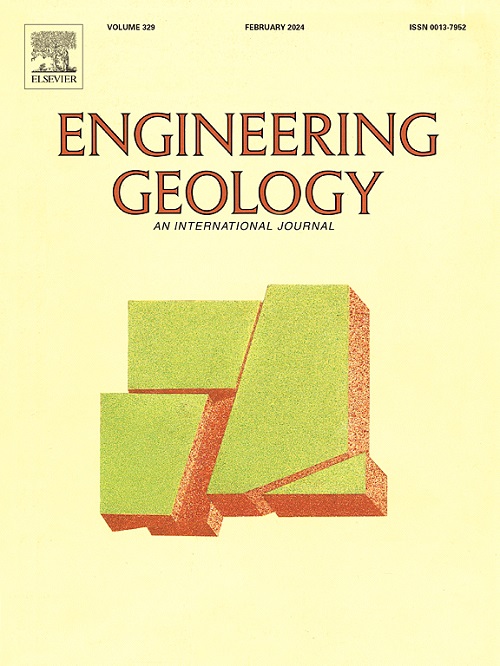Large-scale geohazards risk of submarine landslides considering the subsea cables vulnerability: A case study from the northern continental slopes of South China Sea
IF 6.9
1区 工程技术
Q1 ENGINEERING, GEOLOGICAL
引用次数: 0
Abstract
Submarine landslides pose significant threats to subsea cables distributed on the global seabed. However, regional scale risk assessment of landslide geohazards is rarely reported. This study introduces a methodology for regional-scale geohazard risk prediction of submarine landslides, focusing on the northern continental slopes of the South China Sea. Initially, the study employed the infinite-slope method to calculate safety factors for typical submarine slopes. Addressing uncertainties in geotechnical and seismic parameters, Monte Carlo simulations determine slope failure probabilities. Using kriging interpolation, localized failure probabilities are extrapolated to regional scales, establishing a spatiotemporal distribution method for large-scale geohazard susceptibility. Hazard levels are subsequently determined considering the volumes of potential landslides. The density of subsea cables is used as a vulnerability factor to guide the regional-scale assessment of cable vulnerability. Finally, integrating vulnerability with hazard levels provides a comprehensive assessment of landslide-induced large-scale geohazard risks. The findings highlight elevated geohazard risks in the Taiwan Bank slope segment, moderate risks in the Zhujiang Valley and Shenhu slope segments, with lower risks in other areas.
考虑海底电缆脆弱性的大规模海底滑坡地质灾害风险:南海北部大陆坡案例研究
海底滑坡对分布在全球海底的海底电缆构成重大威胁。然而,区域范围的滑坡地质灾害风险评估却鲜有报道。本研究以南海北部大陆坡为重点,介绍了一种区域尺度的海底滑坡地质灾害风险预测方法。研究最初采用无限坡度法计算典型海底斜坡的安全系数。针对岩土工程和地震参数的不确定性,蒙特卡罗模拟确定了斜坡崩塌概率。利用克里金插值法,将局部破坏概率推断到区域范围,从而为大尺度地质灾害易发性建立时空分布方法。随后,根据潜在滑坡的体积确定灾害等级。海底电缆的密度被用作脆弱性因素,以指导区域范围的电缆脆弱性评估。最后,将脆弱性与危害等级相结合,对滑坡引发的大规模地质灾害风险进行综合评估。研究结果表明,台湾岸坡段的地质灾害风险较高,珠江流域和深沪坡段的地质灾害风险中等,其他地区的地质灾害风险较低。
本文章由计算机程序翻译,如有差异,请以英文原文为准。
求助全文
约1分钟内获得全文
求助全文
来源期刊

Engineering Geology
地学-地球科学综合
CiteScore
13.70
自引率
12.20%
发文量
327
审稿时长
5.6 months
期刊介绍:
Engineering Geology, an international interdisciplinary journal, serves as a bridge between earth sciences and engineering, focusing on geological and geotechnical engineering. It welcomes studies with relevance to engineering, environmental concerns, and safety, catering to engineering geologists with backgrounds in geology or civil/mining engineering. Topics include applied geomorphology, structural geology, geophysics, geochemistry, environmental geology, hydrogeology, land use planning, natural hazards, remote sensing, soil and rock mechanics, and applied geotechnical engineering. The journal provides a platform for research at the intersection of geology and engineering disciplines.
 求助内容:
求助内容: 应助结果提醒方式:
应助结果提醒方式:


